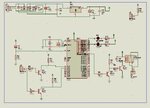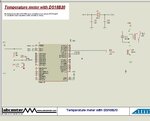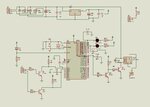chasekan@gmail.com
Member level 1

- Joined
- Jun 23, 2013
- Messages
- 35
- Helped
- 1
- Reputation
- 2
- Reaction score
- 1
- Trophy points
- 8
- Activity points
- 255
hi, herewith i ve attached a circuit, function of this circuit is water level controller in the water tank.
herewith i ve attached the schematic,here the problem is, the controller does not stable some time and the controller does not work as per the program and some other time it does work as per the program,what could be the reason,but it works well in proteus,thanks in advance
herewith i ve attached the schematic,here the problem is, the controller does not stable some time and the controller does not work as per the program and some other time it does work as per the program,what could be the reason,but it works well in proteus,thanks in advance
Code:
INPUT1 EQU P1.0
INPUT2 EQU P1.1
GREEN EQU P0.0
RED EQU P0.1
RELAY EQU P2.0
ORG 00H
STOP: CLR RED
SETB GREEN
SETB RELAY
L1: JNB INPUT2,L1
L2: JNB INPUT1,L2
SETB RED
CLR GREEN
CLR RELAY
L3: JB INPUT1,L3
L4: JB INPUT2,L4
SETB RELAY
CLR RED
SETB GREEN
SJMP STOP
ENDAttachments
Last edited by a moderator:




